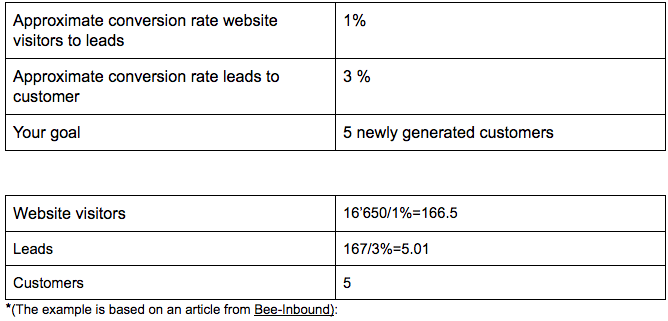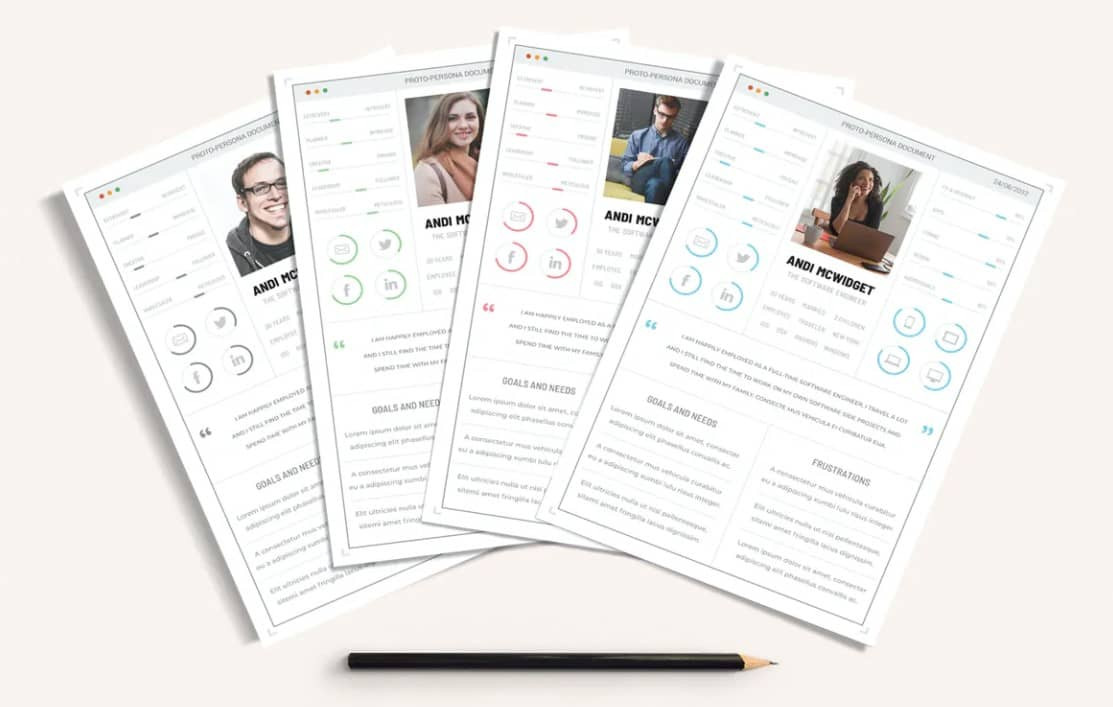Select your language
Blog
Dive into the world of Marketing Automation:
Practical & helpful knowledge that makes your daily life with Marketing Automation easier!
Inbound Marketing - With additional value to more website traffic
What is Inbound Marketing?
Your company can be found by the customers instead of the reverse way. This procedure roughly describes Inbound Marketing. How it works and what it exactly means can you read in the following blog article:
Inbound Marketing focuses on fulfilling the concerns of the customer. You assume that customers are already actively looking for a product or service. Therefore, you offer them answers & solutions to questions that arise during the various phases of the customer journey.
A difference to classical marketing is that not primarily the advantages and unique selling propositions (USP) of your own products & services are put in the foreground, but instead attention is drawn to your own company with relevant & helpful content. Depending on the competition in the industry, it is also becoming increasingly difficult to crystallize clear unique selling propositions. USP are the unique selling points that make your offer stand out from the competition. Therefore it is important that you can position your company as an expert in your topics. Inbound marketing can work across all industries. It is particularly interesting for companies in the B2B sector.
Through this type of marketing you offer additional value to the visitors during the entire customer journey. In return, your company can ask for valuable data to personalise and customise the customer experience and provide relevant content to your customers. By offering customers additional value, they are often willing to trade in their own contact details. The company receives leads - the customers receive the information they want. A win-win situation is created.
Goal in Inbound Marketing
Your company should be found naturally by (potential) customers. For example by an organic search in Google or by valuable & relevant posts on social media like Facebook, Linkedin or Instagram. Through this kind of marketing, communication with your customers becomes more personal, goal-oriented & brings your readers exactly the information they are looking for. What is the idea behind? Your company will be positively remembered by (potential) customers by suggesting suitable solutions. The probability that these customers will come back to your company as soon as they want to use a specific product or service will then increase.
How does it work?
By focusing on the challenges, wishes & problems of your prospective buyers you can bring readers to your own website. The attention is there, the interest is there. The (potential) customers get helpful information about their problems, while you get the opportunity for a new lead - and finally new customers.
Methodology
Inbound Marketing follows the phases of the sales funnel, attract - convert - close - delight:
1. phase - attract
Possible implementations:
- Write relevant blog articles.
- Share content via social media.
- Do SEO so that the content can be found.
2. phase - convert
Possible implementations:
- Offer high quality content with videos, infographics, webinars, e-books or white papers
- Integrate forms & Call-to-Actions (CTA) into the website to provide contact details.
- Set up landing pages optimised for a product or a service.
3. phase - close
Possible implementations:
- Analyse which websites, blog articles, white papers or other resources are viewed by your visitors. This gives you the opportunity to optimize the content and keep it interesting.
- Establish lead scoring with a marketing automation tool. With this evaluation, sales opportunities can be better assessed for a lead.
- Run e-mail marketing with Marketing Automation.
4. phase - delight
Possible implementations:
- Create personalised & individualised customer experiences through surveys or other experiences with your customers.
- Conduct social monitoring with marketing automation tools. For example, you analyze how your company is perceived in your social media channels. Are there any complaints? Or is your company mostly written about in a positive light?
Campaign
What are your options for getting started?
Your goal is to generate attention through additional value. To achieve this, you offer readers an offer through something relevant to them. But this is not about focusing on your products & services. Suitable options are an e-book or white paper on a relevant topic, infographics or infovideos, webinars, checklists, instructions, questionnaires or even templates.
After the (potential) customers have become aware of your company, you accompany them along the customer journey and try to establish a long-term relationship.
Important points in Inbound Marketing
Which content are relevant for your customers at each step of the purchase decision process? Instead of your company imposing itself through marketing, you offer valuable content as support.
- Do you make your content available where your customers search?
- Do (potential) customers have the opportunity to interact with your company via e-mail, chat or social media?
- Which channels is your target group active in? After you have set up your content, it is important that you distribute it.
- Do you have a way to analyze your marketing activities with a tool?
By checking important key figures, you can optimize your content. Some important figures to analyze are:
Number of website visitors, engagement (e.g. shares & comments), number of leads and customers per article, CTA or landing page and ROI (ratio of marketing spend & generated revenue)
Short excursion
General conditions*
*(The example is based on an article from Bee-Inbound)
Important terms & differences
Buyer-Persona
What does a typical customer of yours look like?
Depending on the type of customer, this question may already be answered quite clearly for you. If you don't have a clear answer yet, take a short break right now and think about who a typical customer of your company is.
A buyer-persona is a fictitious, concrete portrait with all the important characteristics of a personality. The ideal is to have as few Buyer-Personas as possible. You can see an example of this in the following picture:
So what use is a Buyer-Persona to you? By clearly defining what your typical customer base looks like, you get a better understanding of your customers. Only then will you really be able to create relevant content that is tailored to your target group. For example, you can create blog articles with more precise speeches and write about topics that really concern your target group.
Customer journey
Every (potential) customer goes on a journey with your company. But how does a typical customer make his purchase decision and what steps does he take in the process?
3 steps in customer journey
- The awareness phase is about a person seeing their own problem or a need for a product or service.
Example: A prospective student notices before the start of her studies that she needs somethin to take notes on lectures during her studies. - In the consideration phase the problem or need is already defined - general possibilities for a solution are sought.
Example: The student considers what she needs for this. She compares different options such as notebooks, tablets or paper and searches on Google for different reviews of the different devices and producers.
At this step, a company has exactly the opportunity to draw attention to itself with Inbound Marketing, in which, for example, a tech company offers valuable reviews of the most important devices in blog form or in video form. - In the decision phase, a concrete solution is chosen by a company
Example: The student wants a tablet and based on the reviews she has decided to use an iPad. By comparing prices, she notices that the company where she read the blog articles does not offer the iPads more expensive than others. Through the interesting & competently written reviews she therefore stays on the current website and buys her iPad directly from this company. The Inbound Marketing has worked.
Difference between Inbound and Outbound Marketing
Outbound marketing is understood to be classical advertising. You draw attention to your products & services by sending advertising messages via advertising media such as radio, TV, flyers or online ads. The aim is to convince as many consumers as possible of your product/service and the focus is on triggering an immediate purchase. The danger with outbound marketing is that the consumers get annoyed by the advertising and that the waste coverage is very high. Although you achieve a wide reach, there are also many uninterested people among them. Thus, outbound marketing tends to promote short-term relationships and the cost per lead is generally higher.
In Inbound Marketing, of course, the buying action is also important. Every profit-oriented company wants to win customers and sell products & services - regardless of the marketing strategy pursued. But the first step is to focus on the needs & problems of the (potential) customers. The marketing activity is designed to give your prospects a certain additional value through informative or entertaining content that is relevant to them. Inbound marketing tends to create long-term relationships and the cost per lead is generally lower.
Conclusion
With Inbound Marketing you let your customers find you. As soon as they have become aware of your website, e.g. via the search engine or social media, you offer your visitors additional value with high-quality content throughout the entire customer journey. What is your goal? Through this type of marketing you build a relationship with your customers from the very beginning. In return for the additional value you offer, you can request contact information of your customers. The additional value you offer makes it more likely that your customers will remember you positively and that they will come back when they need a specific product or service. In the different phases of the Sales Funnel - attracting, converting, closing, inspiring - you have different implementation options to achieve your goal.
Do you have further questions about inbound marketing or would you like support with your marketing automation or? Contact us.
To stay up-to-date on the most exciting topics in marketing automation, subscribe to our newsletter at the bottom of the page.
Sources image & text content
- Book Content Marketing in der Praxis - Claudia Hilker
- Bee Inbound
- Inbound Marketing Mark Lotse
- Image Buyer Persona










